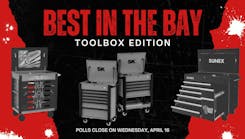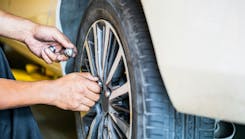Maintenance leaders talk rise of diagnostic tools in the shop
From our sister publication Fleet Maintenance.
As vehicles are becoming more complex, shop managers are increasing the number of tools per technician to help ensure technicians have the tools they need when they need them. Noregon’s Unpacking the Commercial Vehicle Diagnostic Market 2023 report found that there were four technicians per every one diagnostic tool in 2021 versus 6:1 in 2016. That gap is expected to further narrow to 2:1 by 2026.
Fleet Maintenance recently spoke to three shop operators to learn more about how their use of diagnostic tools and their technicians-to-tool ratio is changing.
These include: Bill Hill, owner of Mighty Auto Pro, an auto mechanic and auto repair center in Medina, Ohio; Dan Carrano, VP of fleet maintenance for A. Duie Pyle, a West Chester, Pennsylvania-based freight and logistics services company with 21 shops; and Tom McGuire, chief operating officer for Precision Diagnostics, a Madison, Wisconsin-based collision sublet provider providing service to more than 850 shops in the Midwest.
Here’s what they had to say:
[The following has been lightly edited for clarity and length.]
Fleet Maintenance: Are you increasing the number of diagnostic scan tools available to technicians?
Hill: We have probably one-and-three-quarter tools for every technician. That is indicating the vehicles we’re working on are becoming so complex that we need more specialty tools for them. The pace of change is definitely increasing, and I expect the trend to continue.
Carrano: We are increasing diagnostic tooling and other shop tools. We used to have one laptop per shop, then we went to two and then three. We’re in the process of purchasing more handheld devices for technicians. We believe that will aid us in providing more diagnostics. Without the right tools, it can delay a tech getting to the diagnostic part of the job. There is so much diagnostic testing that is done and the last thing you need are techs that can’t do their job because they don’t have the tools.
McGuire: Our physical sites see more shared diagnostic tool usage among technicians, and depending on the tool, we are closer to 2:1 in our physical locations. There are certain diagnostic tools that we run a 1:1 ratio on to improve overall efficiency as well as driving technician ownership of process and workflow. Our mobile fleet does truly elicit more of 1:1 ratio with each mobile technician generally being deployed with multiple diagnostic service tools to ensure OEM coverage and capability without delays to our end-user customer.
FM: How does tooling benefit technicians?
McGuire: The more access a technician has to tooling in “real time,” the more efficiency opportunity is generated. The maximization of labor and efficiency is also a byproduct of the skillset of the individual tech.
The more familiarity and the more exposure the technician has to tooling and fluency in that tool’s workflow, the greater the efficiency and labor output will be recognized.
Carrano: You gain efficiency with technicians being able to start and finish a particular repair without having to stop and wait for a tool. Depending on the shop’s capacity, moving job to job and moving trucks is inefficient. It isn’t just the inefficiencies. If you’re short on diagnostic tools, it builds a level of frustration for a technician. Having enough tools really lowers that frustration.
FM: Are shops purchasing the tools or are technicians buying them on their own?
Hill: I purchase the tools and all of the ongoing updates, which can vary in price from $1,200 to $1,800 per subscription. With the price of these scan tools—the last one I bought was $6,800—I have to preplan for it. What usually drives me to buy a tool is how many times I don’t have what I need. I also let my staff give me their input on what they’d like to see next. A lot of shops require technicians to have their own scan tools. In my opinion, when you have to buy the scan tool and then the ongoing subscription, you have to make sure technicians are making enough to make it worth purchasing it on their own, and that can be hard.
McGuire: With the cost of diagnostic tooling and general updates and training, we supply all our team with their tooling. To really focus on growing with the industry need, we want to be sure that the burden of tooling is left on us as a company and that our technicians are free to focus on repairing vehicles correctly.
We attempt to understand and make the investments needed to outfit our team members with every piece of equipment anticipated to drive customer resolution. I believe the trends the industry is beginning to see reflect the increasing complexity and dynamics of the diagnostic segment. To scale the diagnostics business and provide timely and accurate solutions, companies performing diagnostics for a living are going to have to increase their spend on tooling solutions.
Carrano: The shop purchases the diagnostic tools. Pyle has been supplying the shops with diagnostic tools ever since electronic controlled engines were introduced to the industry, which was at least 20 years ago. It’s imperative that the techs have the necessary tools to properly diagnose complex electronic or electrical issues. Without them, they are just guessing until the problem goes away. We provide the latest diagnostic software that also allows us to follow OEM diagnostic procedures, which is generally the most effective and efficient process. Having the correct diagnostic tooling, and in many cases the latest/newest model, does help with retention because the techs like to see that Pyle is willing to invest in the tooling for them to do their job in the most proficient manner.
To read the original article, click here.



